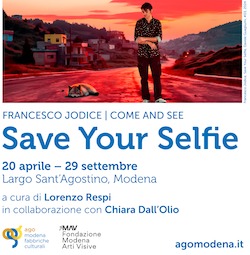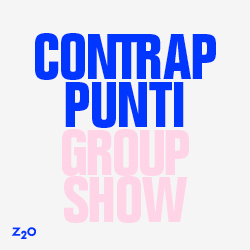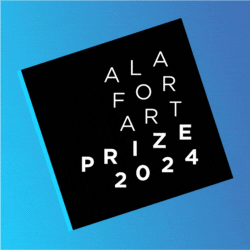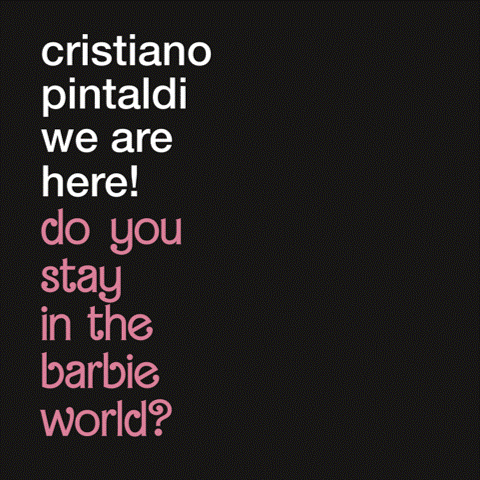
Riprende nel 2019 il programma di Såm – esplorazione visiva della Lessinia: una parola di origine cimbra che significa seme ma anche lavoro sulle immagini del territorio montano nella zona prealpina tra le province di Verona, Vicenza e Trento. I curatori del progetto Ana Blagojevic, Chiara Bandino e Francesco Biasi mi raccontano la seconda edizione del programma, in collaborazione con il Film Festival della Lessinia e Fonderia 20.9.
Film Festival e Fonderia, come l’anno scorso, si propongono di studiare la Lessinia sia dal punto di vista naturalistico che dal punto di vista antropologico-sociologico con la fotografia da una parte e con il cinema dall’altra. Rispetto all’edizione pilota del 2018, Såm 2019 presenta alcune novità: da una parte, c’è un programma di mostre in città nello spazio di Fonderia 20.9 a Verona, legate al tema del paesaggio e della montagna – dal progetto espositivo organizzato con Landscape stories Possible Landscapes, dove sono state esposte le opere prodotte durante il workshop tenuto in Lessinia dal fotografo francese Mathieu Bernard-Reymond, alla mostra della residenza Såm 2018 curata da Steve Bisson, i cui risultati sono ancora visibili presso Fonderia 20.9 fino al 26 maggio (questi gli autori coinvolti: Paola Fiorini, Ana Blagojevic, Chiara Bandino, Emanuele Brutti, Davide Galandini, Francesco Biasi e Nicolò Lucchi).
La residenza 2019 è invece curata dall’artista visivo e fotografo polacco Rafal Milach – da poco diventato anche fotografo della Magnum – e dalla book designer Ania Nalecka. I vincitori del bando, selezionati dopo open call, sono quattro giovani fotografi scelti sulla base del portfolio e del curriculum: Claire Laude, Anto Milotta (che fa parte del collettivo Milotta / Donchev ma che in questo frangente è stato selezionato come artista singolo), Krzysztof Światły e Martina Zanin.
Il primo periodo esplorativo della residenza è avvenuto a fine marzo e ha permesso agli artisti di avere una prima conoscenza del territorio da vari punti di vista. La seconda fase, di due settimane, avrà luogo a fine maggio e sarà il momento più propriamente produttivo, in cui saranno presenti i curatori per seguire l’editing, l’andamento dei lavori e l’impostazione della mostra finale di fine agosto. Diversi gli strumenti che i fotografi avranno a disposizione: la consultazione libera della biblioteca di Boscochiesanuova – punto di partenza dell’esplorazione e base di appoggio logistico – una bibliografia e materiale d’archivio, scanner, set di luci da studio con fondale, stampante, laboratorio di stampa fine art per i provini e camera oscura per bianco e nero.

Ho sottoposto alcune domande agli autori vincitori di Såm 2019, aspettando di seguirli nella seconda parte della residenza artistica e di vederne i risultati.
Valeria: I know that on the first step of your artistic residency in Lessinia (March 2019), you explored the territory and met some experts and inhabitants of the places you are involved in for SAM. What has been your first impression on Lessinia and which kind of primordial or initial artistic thinking inspired you?
Claire Laude: Lessinia left the impression on me of a forgotten beautiful place, something between immutable and unknown, although this unchanging aspect could paradoxically move to a state between absence and oversight. In general, I’m interested in self built structures, how the human being is adapting themselves to their environment. In this aspect I was really impressed with the vernacular architecture. For example, one of the first details I noticed when I arrived was the structure of the roofs. They are made from big flat stones and sediments of stone from the mountains, that have then been put above one another. At the same time, it is possible to see that through the use of concrete, or the introduction of non- traditional materials, the values of such architecture has been ignored or overlooked. It is very difficult to build today like they once did centuries ago. The choice to build with concrete has to do with a practical and economical decision, but the introduction of concrete in an old structure left traces, which afterwards could not be taken away. In the village’s museum of Bosco Chiesanuova, I discovered an old tradition though an archival image. This picture showed a building like structure that resembled a big pyramid, and next to it people were breaking ice. These are relics of a forgotten tradition, how to hand-make ice and to preserve it through a buried architecture. Truly amazing, and which could not be imaginable today with climate change and all the techniques that accompany our life nowadays. For the residency I would like to work on the traditional architecture of the region, especially that which concerns this tradition – the Ghiacciaie/Giassàra – and to look for its traces in the architecture and landscape today or anything that could remain of this disappeared tradition. I would like to put together this reality in confrontation with constructs/installations of mine, that point to the forgotten and now non-visible aspects of these traditions.
Anto Milotta: It’s interesting the use of the word primordial in this questions, given the fact that part of our research is dedicated to the exploration of the ancestral knowledge. A Culture (Cultura) that returns to become Cultivation (Coltura), to establish once again the connection between different scientific disciplines and reinstate their experiential aspect. The people, that were involved to lead our exploration of the Lessinia region in the first phase of the residency, have passed us on their personal narrations and perceptions of what this territory was all about. What came forth was the fact that this territory is in constant transformation from a point of view that regards the geology, the landscape, the urbanisation, as well as the social and the political change that took place across the years. All of these observations emerge also from the vast bibliography dedicated to this place, especially in the Diaries of the Lessinia, that have mapped its history from 1987 up to date. Furthermore, in the biography of don Alberto Benedetti, a hermit and a self-taught scholar of the Lessinia region, we have found a passage in which this priest speaks of entropy in terms of degradation of the energy. In the words of this eclectic character transpires an authentic relationship that binds the individual to the environment, especially in relation to the fact that the conversion and conservation of the energy is what defines the vital principle. This premise, as well as the collective imagination of the Cimbri people, have become the starting point for our work. In the last case, we took on the recurring symbols in the Cimbri pagan beliefs that relate to the dimension of the afterlife.
Krzysztof Światły: I have to admit that I really enjoyed Lessinia as it is a very non-touristy, meaning not-spoiled, area, not only because it is not well known, even among Italians, but it is also a place that hides more than it shows. Of course, it is very beautiful but it does not have this immediate arresting, attention-grabbing, first-page-of-a-tourist-guide effect which makes it a great place for artists. Because, you know, on the one hand it may seem difficult to make visual arts in a place that is not that eye-catching but on the other it makes it easier because you do not have to focus on avoiding all the dingy, cliché frames and you can concentrate on your research and discovering things.
And reasarch is crucial for me as an artist, I always start with it and I love to make it a part of the final project so the formula of discovering the region, meeting specialists, reading and talking to people and then coming back to work is perfectly aligned with the way I work. I am also a philologist and I like to discover the connections between written/spoken language and a visual language. So, before I came to Lessinia I wanted to explore the dying Cimbrian language, still spoken in this region, and make a visual story about it but then my wife – who is also my great researcher – handed me the book by Karl-Markus Gauß – where I read about the times when Lessinia was the bottom of the prehistoric Thetys Ocean. I started digging and I found studies about the language of the fish living in Thetys Ocean, which communicated – in a very sophisticated manner – by changing colors. Today we do not understand this language and as evolution progressed, as humans we lost the ability to communicate with colors. In a way it was a regression then and then you can think about the present, how we are facing bigger and bigger unification through nationalist movements, how rainbow flag is being persecuted, how color of the skin is still a big political/social factor etc. etc.
So, for me this is the most interesting factor – something you do not consider visual but you can present it in a visual way. And – what is even more important – something that tells you a story but at the same times is another story about photography/visual arts/visual language itself.
Martina Zanin: Lessinia is such a wonderful territory with plenty of interesting aspects. During the first step of the Residency we have had the opportunity to deepen some of these aspects, such as the geology of the territory, the history and the present of the inhabitants, the contrade and their abandoned architecture, and eventually, the flip side of Lessinia territory: the caves. The latter has been the starting point of the work that I will develop during the second part of the Residency in May. I have been fascinated by these underworld that lay just under our feet and found interesting to approach the relationship between the surface and the underground of the same language.
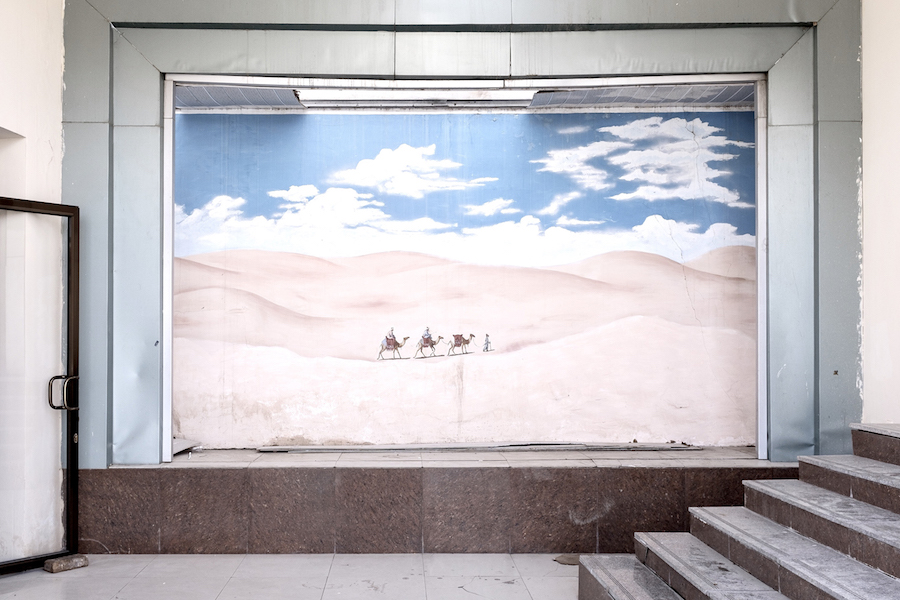
Valeria: I viewed your portfolio and I definitely saw different approaches on “what is an image” and on how to address to the observer your aesthetic or visual idea of the world. Could you give me a sort of definition or statement of your vision and your research?
Claire Laude: My artistic practice is inseparable from my apprehension of space and my work deals with the construction and representation of the memory of a place. I’m interested in the feeling of belonging in a space, when the site has disappeared or does not exist anymore. Each phenomena that could accompany this belonging, nostalgia, derealization, how one could feel attached to a place, where they have never lived, etc. I choose sites that are transformed, in danger of disappearing, or being forgotten – for example the city of Königsberg/Kaliningrad, an abandoned military reserve, Alexanderplatz square in Berlin and Berlin’s traditional craftsman shops. Their redevelopment, reconstruction, destruction and/or appropriation are focal points of my research. By identifying and decontextualizing remains of the past, and by modifying and restoring sites, I use found materials to build ephemeral installations and photograph them. By association, the photographs deal with the notion of disappearance, and the precariousness of the balance between what endures and what is lost. The image for me is this state of “in between“ and its potentialities may arise through its ambivalent relationship with the reality. I’m looking for an indescribable detail, that could produce an interrogation about an uncertainty. An imbalance between what has existed and what could be, a potential threshold situated between the rewriting of the past, a statement of an existence and a projection of a future. The aim of this approach is to question the image of the perception of a place, situated somewhere between reality, memory and poetry.
Anto Milotta: initial stage of our work is the thorough analysis of the subject and, through a process dedicated to both research and experimentation, we discover manual and technological possibilities to translate the content of the matter. Our distinct approaches to work, one practical-manual and the other technical-technological, cause a short circuit in the creative flow that spark intuitions able to transcend the limits of the single medium and level the totality of the artwork into one unified vision. To sculpt sound, to model images, to digitize matter are all symbolic gestures – messengers to the aesthetics of interdisciplinarity and interconnectedness that represent for us the concept of sensible technology. Our attention is directed at the relationship between natural and artificial and, by balancing those two antithetical forces, we evoke a responsible progress in which the individual identifies with the macrocosm. The projects propose a multi-dimensional investigation into the different strata of the surrounding reality and uncover their poetics in the imprint of an invisible presence.
Krzysztof Światły: In most of my works I started with a research and only afterwards I would go and take my own pictures. I think it is mainly because I like to work on long-term projects and stories, not single photographs and also because I tend to recycle photos and work with archives. The world is full of images and I think that as visual artists and photographers we do not have to multiply them just to add our watermark to them. Of course, part of the creative process is creating a new image but I like to think about it only as a component, not the most important element.
So if you ask about my definition of research – for me it is a crucial part of the work, together with editing. As an artist I have this researcher-hunter-gatherer attitude – I have an idea, I start to read and watch, then I go and scout. I go back and think, then I go and hunt for images and stories, I collect them, take them “back to my cave”, put them on the walls and treat them like puzzles, look for a match, dig more, hunt more, go back, rearrange them and so on. And what is more – I love photobooks, zines and exhibitions where some parts of the actual research are smuggled in a clever way into the final work, so I try to create these kind of works myself.
And what about the definition of the image itself? Well, that is a hard question because I do not believe there is one. But I agree with John Berger that „we never look at just one thing, we are always looking at the relation between things and ourselves”. So image can be an object, a talisman (like the pictures of your loved ones that you carry with you in your wallet or iPhone) but also a mirror which makes it a perfect material for artists.
Martina Zanin: My work is mainly based on past circumstances and on topics such as memory, relationships and coincidences. I am attracted by the ambivalent relationships with the surroundings; the fragmentation and ambiguity of memories and its influence on the present and on the future of one individual or more. I mainly use photography, associating it with other medias, including texts, archive pictures, or drawings and installations. This allows me to create a multiple-level narrative within with narrative spaces and perceptions intertwine, experiencing with various forms of language. I often choose and sequence following a structure, similar to a movie or a poem, trying to let the pictures talk to each other creating visual and mental connections and movements.





